“I wanted to do something that had elements of classic designs, but in a twisted way”: Dennis Fano of Novo Guitars
Some indie guitar makers are fortunate enough to grab the flavour-of-the-month spot just once. Dennis Fano has managed it for the best part of a decade.

Image: Eleanor Jane
I first encountered Dennis Fano’s work in the pages of Guitar Magazine some 20 years ago. My former colleague Rick Batey had interviewed XTC’s Andy Partridge, who’d raved about a guitar that was custom-made for him by a little-known builder in New York. It turns out that the builder, Dennis Fano, was then little-known because it was the first custom guitar that he had made.
“I had put together some kit guitars, bought some bodies and necks from Warmoth and made some for friends and so forth,” he tells us. “But that was a big leap, and I kind of skipped over some steps getting there!”
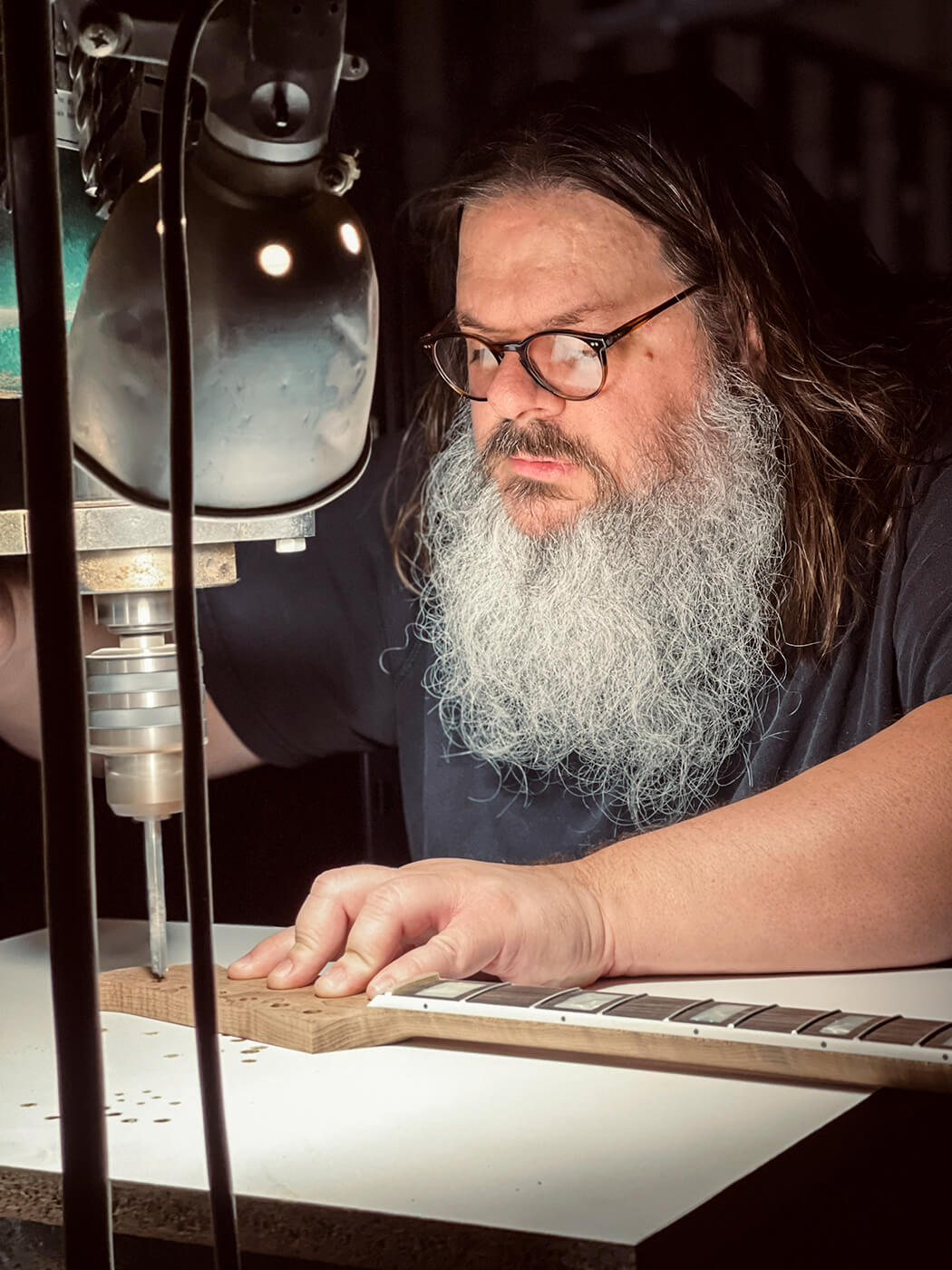
Jersey boy
At the time he created the guitar for Partridge, Fano was working as a repairman at Matt Umanov Guitars, a legendary shop on Bleecker Street in New York City’s Greenwich Village. The venture was kind of typical of the way the young guitar tech had leapfrogged into enviable positions in the world of luthiery, including securing his own workbench at one of the country’s best-respected guitar havens in the first place. But Fano seemed destined to cut a distinctive profile in the industry right from the start, and if the Partridge creation took him almost prematurely from repairing to building, there are thousands of Fano and Novo players today who are certainly glad he got there sooner rather than later.
Fano was born in New Jersey in 1970 and moved with his family to Florida and then North Carolina before settling back in Bloomfield, about 20 minutes south of New York City, in his early teens. Sport had been the big draw of his youth, and he played American football, baseball and – as the Yanks call it – soccer, before that 1980s music-video sensation hit the airwaves and lured him over to the dark side.
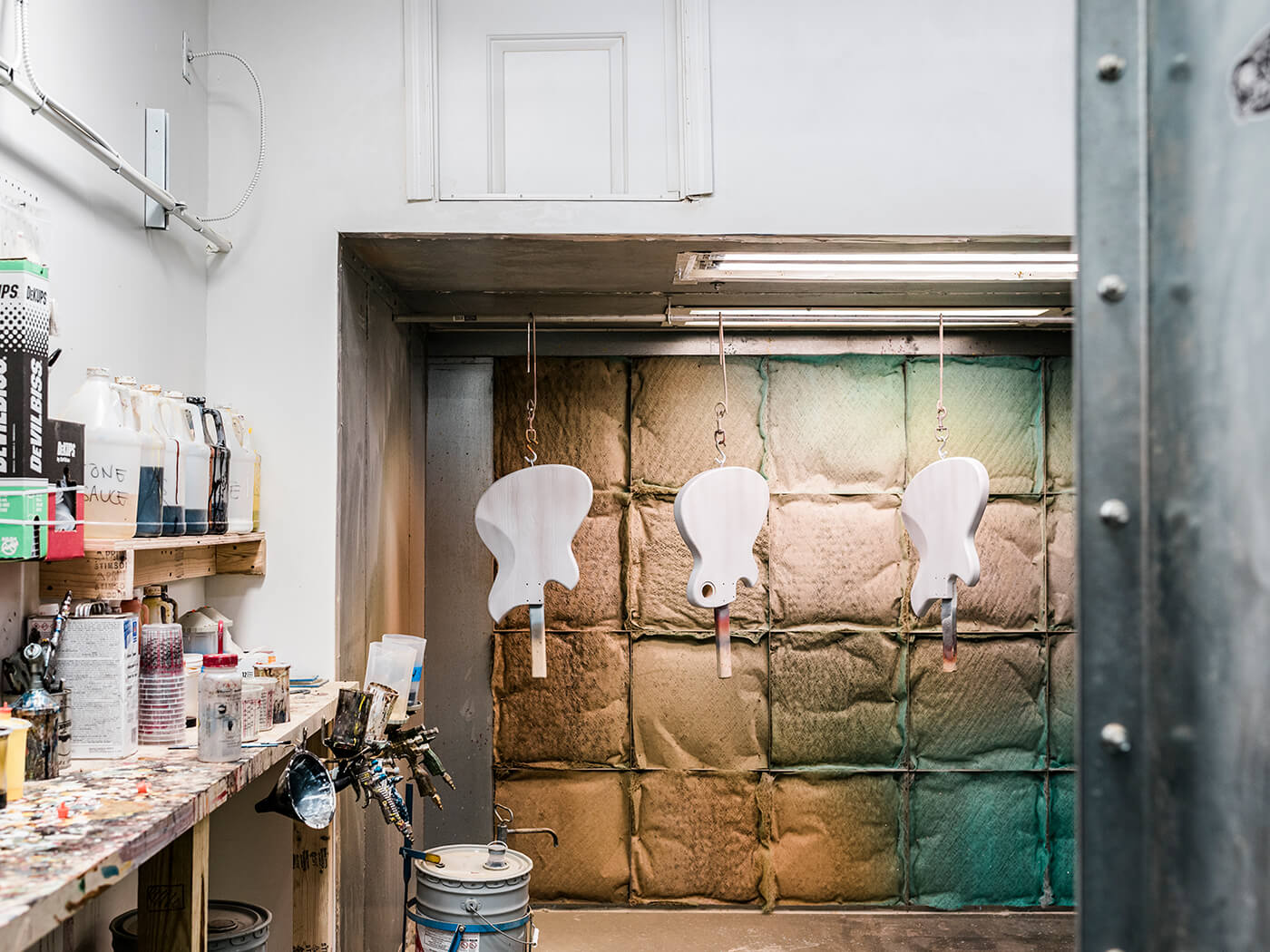
“Then MTV came out,” he says. “I was 13 when I started liking groups like Def Leppard; they were my first favourite group. My oldest brother was listening to The Police, and Led Zeppelin, and Rush and stuff like that, so I ended up picking up on some of that, and that’s still some of my favourite music to this day. But it wasn’t until I got back to New Jersey and I was about 14 that I picked up my first guitar.
“At first I had a very inexpensive nylon-string guitar that my mum had purchased for me. I think it cost about 30 bucks. And it didn’t take long for me to take the top two strings off and start playing it like a bass, because I was drawn to the bass more than to the guitar. That probably had to do with the Def Leppard videos with Rick Savage playing the Kramer and all those pointy guitars.
“I got an electric bass for Christmas shortly after that, and I was in three or four bands before I knew it. Not that I knew how to play. I was the only kid in town with a bass, so people would just say, ‘You’re in the band!’”
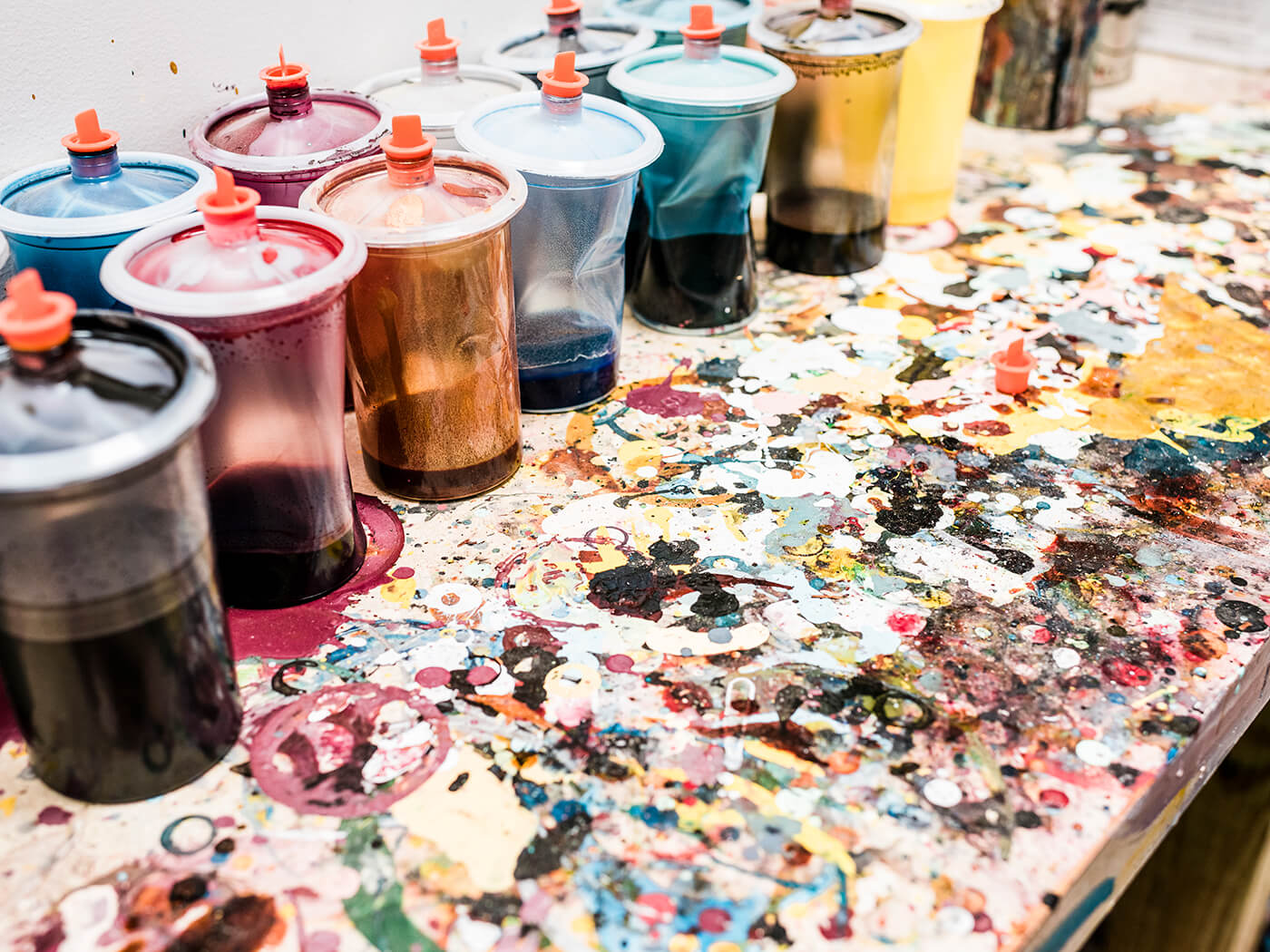
Playing in bands in high school led Fano to messing around with his own guitars, which led to putting together some kit guitars for friends. Following the instinct further he decided to convert his own ’66 Jazz Bass (already heavily messed with, he assures us) to an eight-string bass with three EMG pickups, but got stuck on the nut. A local repairman named Darrell Gilbert, who also worked at the Gibson Showroom in New York City, sorted the nut for him but was impressed with the rest of the work Fano had done on the instrument.
The encounter led Fano to quiz Gilbert on how he might get into the business, and the more experienced repairman invited him to come to the shop on Saturday afternoons to learn how it was done.
Sometime after Gilbert himself had taken a position at Umanov’s, the shop needed a third repairman. He recommended his some-time apprentice, and Fano got the job.
“It wasn’t until I went to Umanov’s that I started taking it seriously,” Fano tells us. “I was kind of lost and didn’t really know what to do with myself. I got the job and spent five years there doing repairs on everything from ukuleles to acoustic guitars, electric guitars and basses – anything with strings on it. I had Darrell and one other senior repairman there showing me the ropes and teaching me how to do good work.”
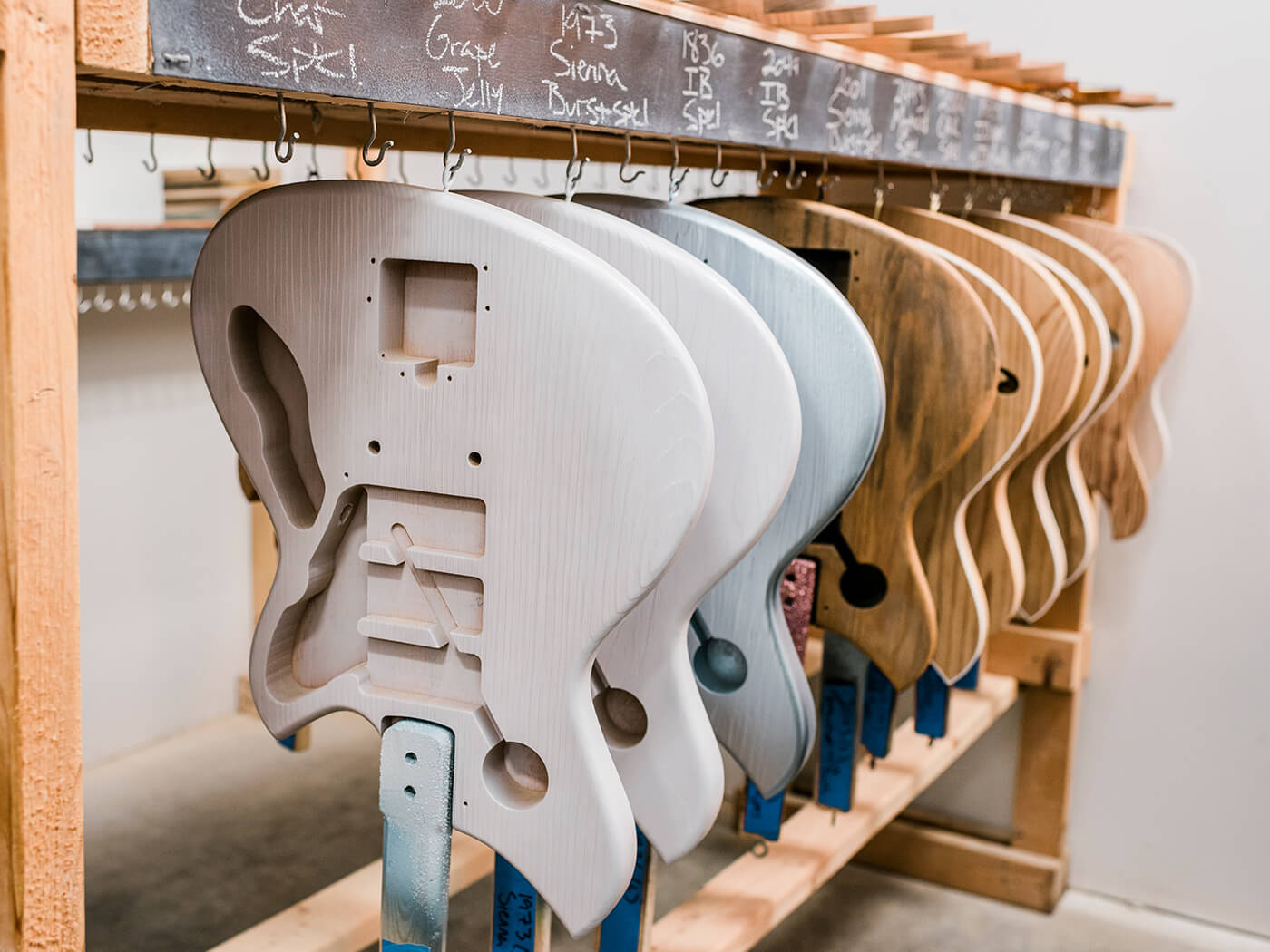
Super Fano
As we well know, however, the repair gig wouldn’t be with Fano for the long haul. “I was working at Matt Umanov Guitars and I had a customer come in,” he recalls. “I recognised the name, David Yasbek, and I knew that he had just worked with my favourite band of all time, XTC. So, out of character for me, I just said to him, ‘You’re the David Yasbek, right?’ And he said, ‘Uh, I guess so…’
“I had an XTC tattoo and had the artwork hanging up over my bench, so he could see that we had that in common. We talked a little and at the end of the conversation I just said, ‘Next time you talk to Andy, just let him know that there’s somebody out there that would love to build him a guitar.’
“Little did I know that David was going to be on the phone with him the next day: ‘Oh, by the way, I went down to Umanov’s and there’s this kid working in the repair shop and he said he’d like to build you a guitar.’ I’d given him my number, and I was blown away. He called me the next day and said, ‘Here’s Andy’s number, give him a call!’
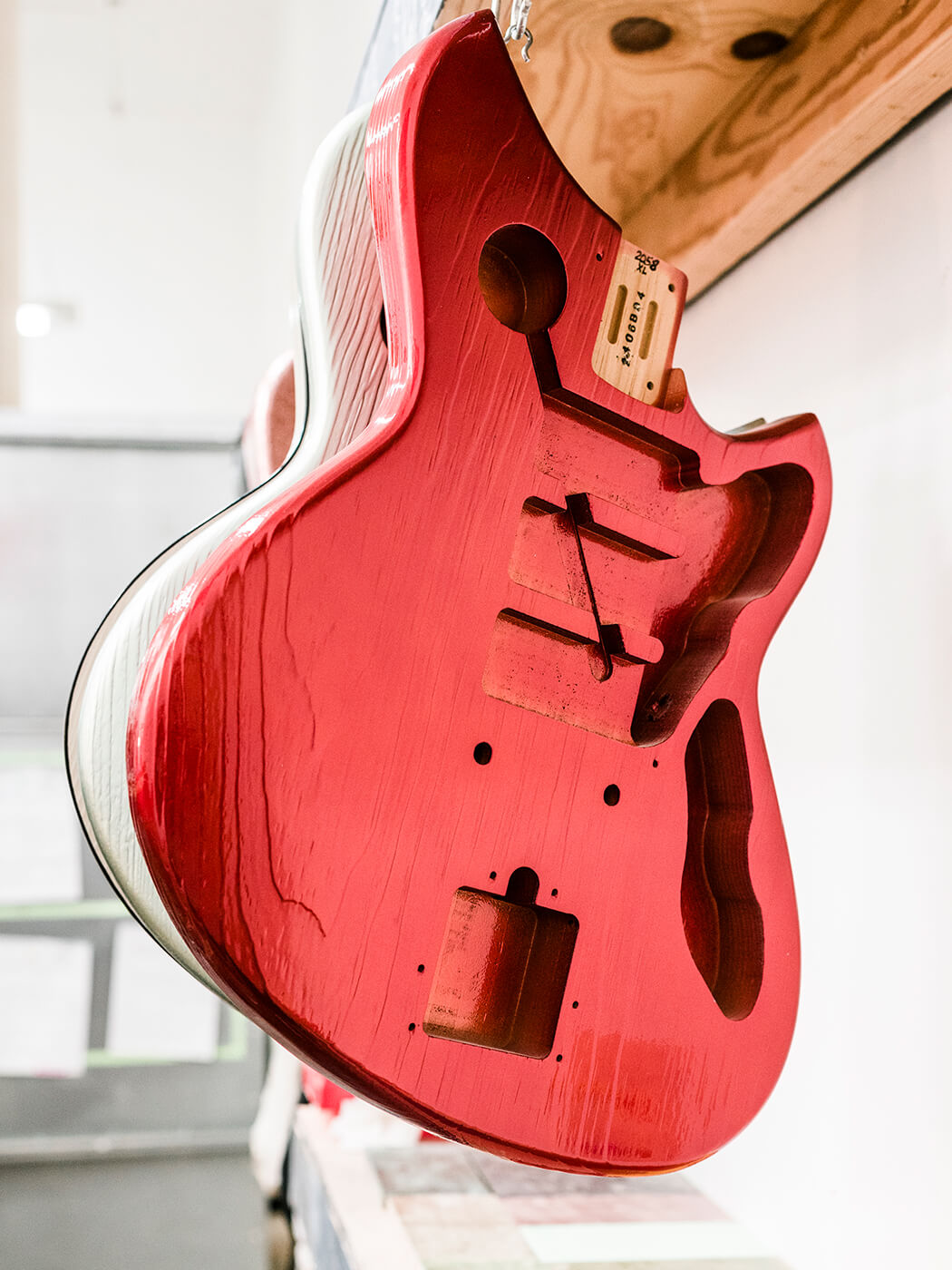
“It took me three days to work up the nerve to do that. So, I did, we talked a little bit about it over the phone, we traded some images of it over the fax machine – I still have them tucked away somewhere in the archives – because it was back in ’95 so I didn’t have a computer or internet or an email account or any of that stuff. And being really bold and young and not really knowing that much about guitar building I said, ‘Tell me what you want and I’ll make it!’”
In what was largely still a pre-internet age, Partridge took the leap on the strength of their discussions and exchanges of ideas, and the superfan built him a guitar that he was clearly quite thrilled with, judging from his raves in the pages of Guitar Magazine a few years later. It was quite a leap, considering Fano’s paucity of experience, yet the collaboration helped to kick the fledgling maker up to the next level, confidence-wise at least.
“He’d been approached over the years to play certain guitars,” Fano recalls, “to endorse them, and had always turned that down. Then somebody came to him and said, ‘I’ll build you anything you like,’ so he thought that was cool. He didn’t know anything about me, and he found out in retrospect I’d never built a custom guitar before [laughs].
“I was working in a repair shop and basically the five years I spent at Umanov’s was like going to college for me. After five years there I said, ‘Okay, I don’t want to repair guitars for a living, I want to build guitars.’ I’d got some ideas about what I wanted to do, and I decided to just take that leap.”
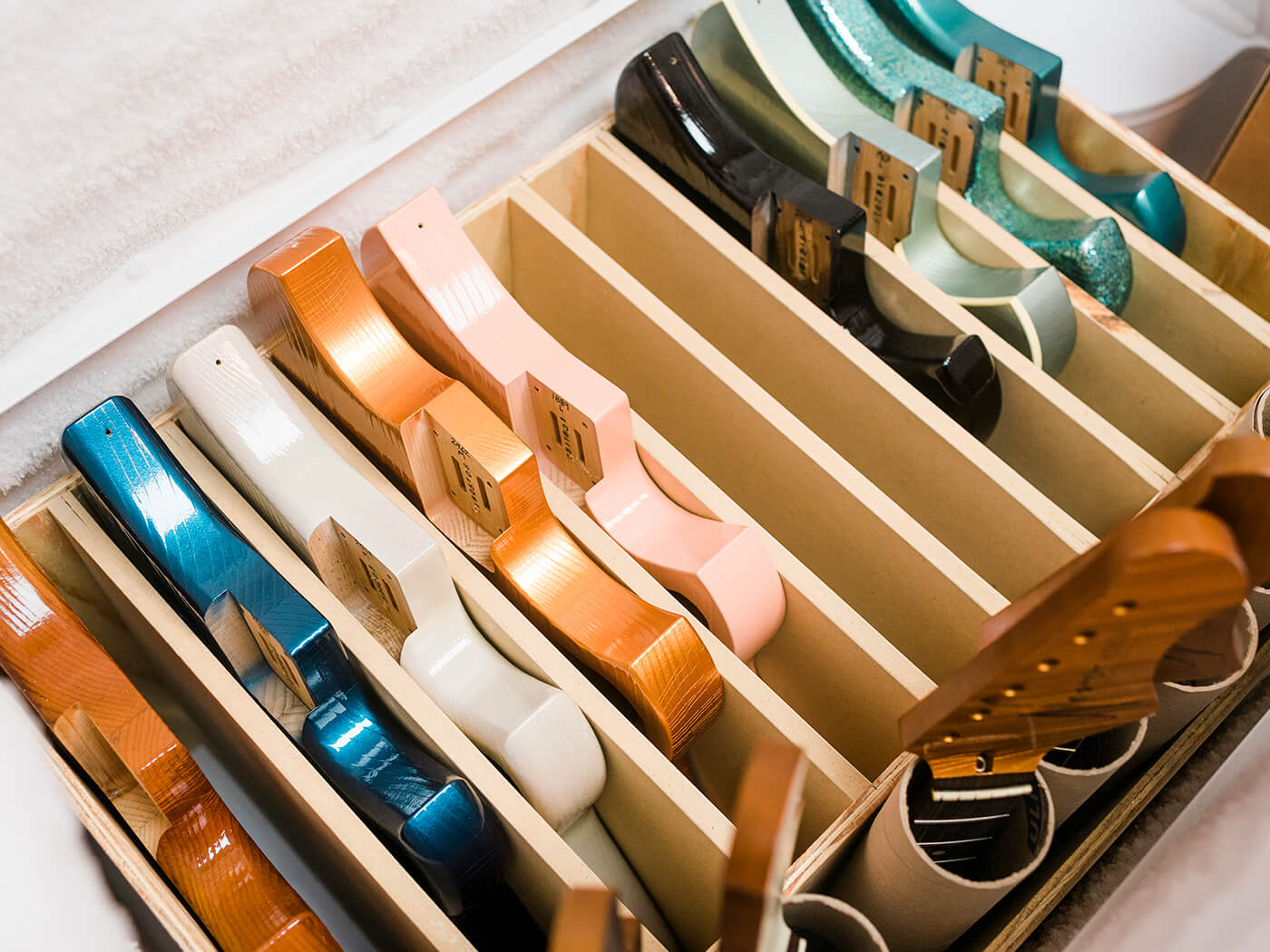
Alternate reality
Fano’s early work as a guitar-maker involved mainly one-offs, primarily high-end efforts that entirely fit the image of a custom guitar shop. A few years in, though, he developed an overarching concept that would come to define his work for the much wider audience that was waiting. He wanted to do something that would help him stand out amid the many makers of custom Strats, Superstrats and Tele-like guitars, and devised a stylish means of getting there.
“I wanted to do something that had elements of classic designs,” he says, “but do them in a twisted way. So, I kind of dreamt of this concept: what if there were this guitar company that existed back in the 50s that was actually a conglomeration of all of these companies that we know, but they were all under one roof. You’d have your Gibson and Fender, and your Rickenbacker, Gretsch, Guild… How might some of the things that we think of as being from classic guitars have been different if all of those builders and designers were under one roof?”
The line that embodied that vision, launched in the mid 2000s, was first called the Artifact Series. Models such as the RB6, SP6, and TC6 and others displayed cross-bred elements such as, for example, a Rickenbacker-inspired body with bolt-on neck and six-a-side headstock, or an erstwhile LP Special wannabe with Tele-style pickups, and so on. Just as the guitars started gaining in popularity, however, Fano discovered that the historic creator of Fender’s first series of Relic guitars, Vince Cunetto, was using the Artifact name on a run of guitars he was building himself.
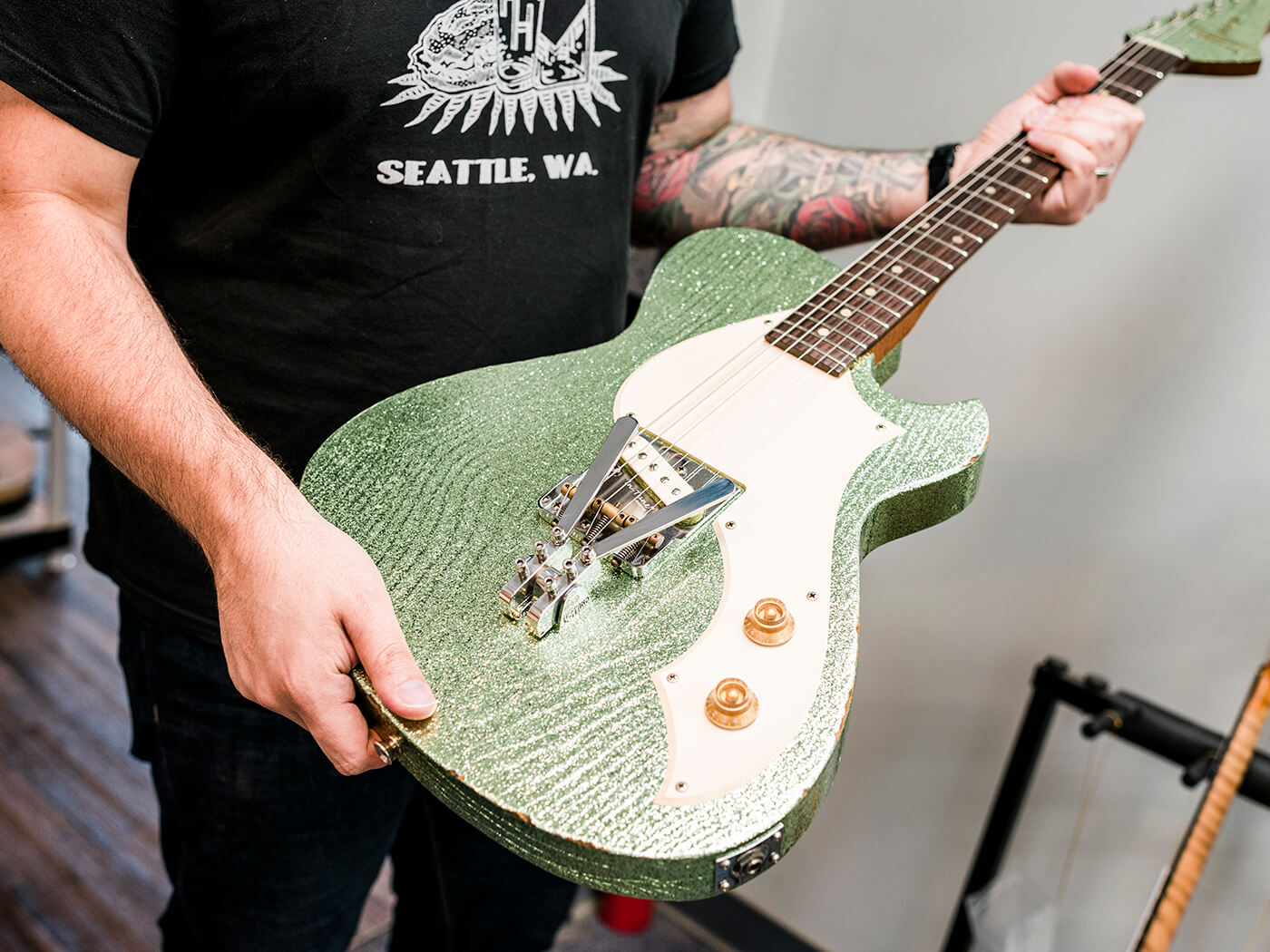
“But I still like the idea of Artifact,” he says, “and started playing around with it, and put together the term ‘Alt de Facto’ because it sounded like ‘Artifact’ if you said it fast enough [laughs]. It was kind of a way of breaking up Artifact and making it alternate-reality, taking a little poetic license there. So maybe the alternate reality is that all of these companies were under one roof as a collective.”
One of the hallmarks of the Alt de Facto series, that has carried over into Fano’s Novo guitars, is the distressing – the shop-applied playwear that other makers call ‘relic’ing’ or ‘factory ageing’. While players remain eager to discuss the veracity of such work – some rather disparagingly – the premise of Fano’s guitars arguably provides a simple justification for its inclusion: if these are intended as guitars made in some forgotten legendary facility of the 1950s and 60s, it makes total sense that they look that way. For Fano himself, though, the practice came about out of a desire to meet another goal entirely.
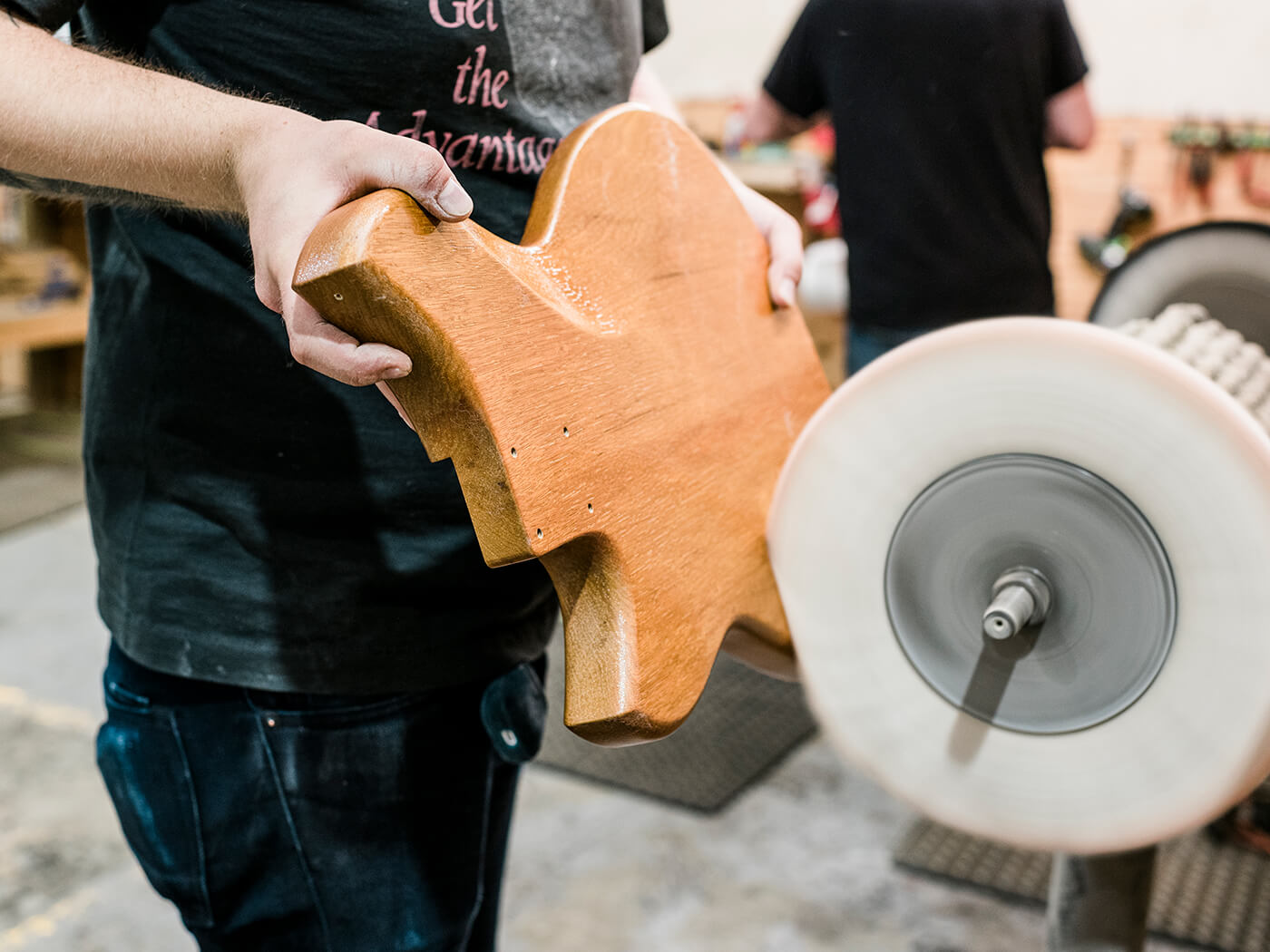
“Between 2000 and 2006 or early 2007 when I made the first Artifact,” he tells us, “I was building all of these bespoke, one-off custom guitars that were very ornamental, dipped in glass, super clean. And I had a lot of customers – by the time I’d completed the guitar and put all of that work into it – say, ‘This guitar is beautiful! I don’t want to put a scratch on it. I’m not even going to play it, I’m going to keep it in its case!’
“And I’m like, ‘No! I built that guitar so you could play it and make music with it.’ And after a number of those I thought there’s got to be a better way. You’ve got to be able to make a guitar and hand it to somebody and not have them just baby it, but actually want to dig in and play this instrument. So, it was kind of out of that need that I had – wanting the guitars to be played and do what they were built for.
“Once I started doing the distressing that preciousness went away. You could take those guitars the first time and it would feel broken in, it would already have scratches, the lacquer would be worn away on the edges and the back of the neck, and it not only felt better but people were sort of responding to the idea that, ‘Oh, it’s a new guitar but I don’t need to feel too precious about it.’”
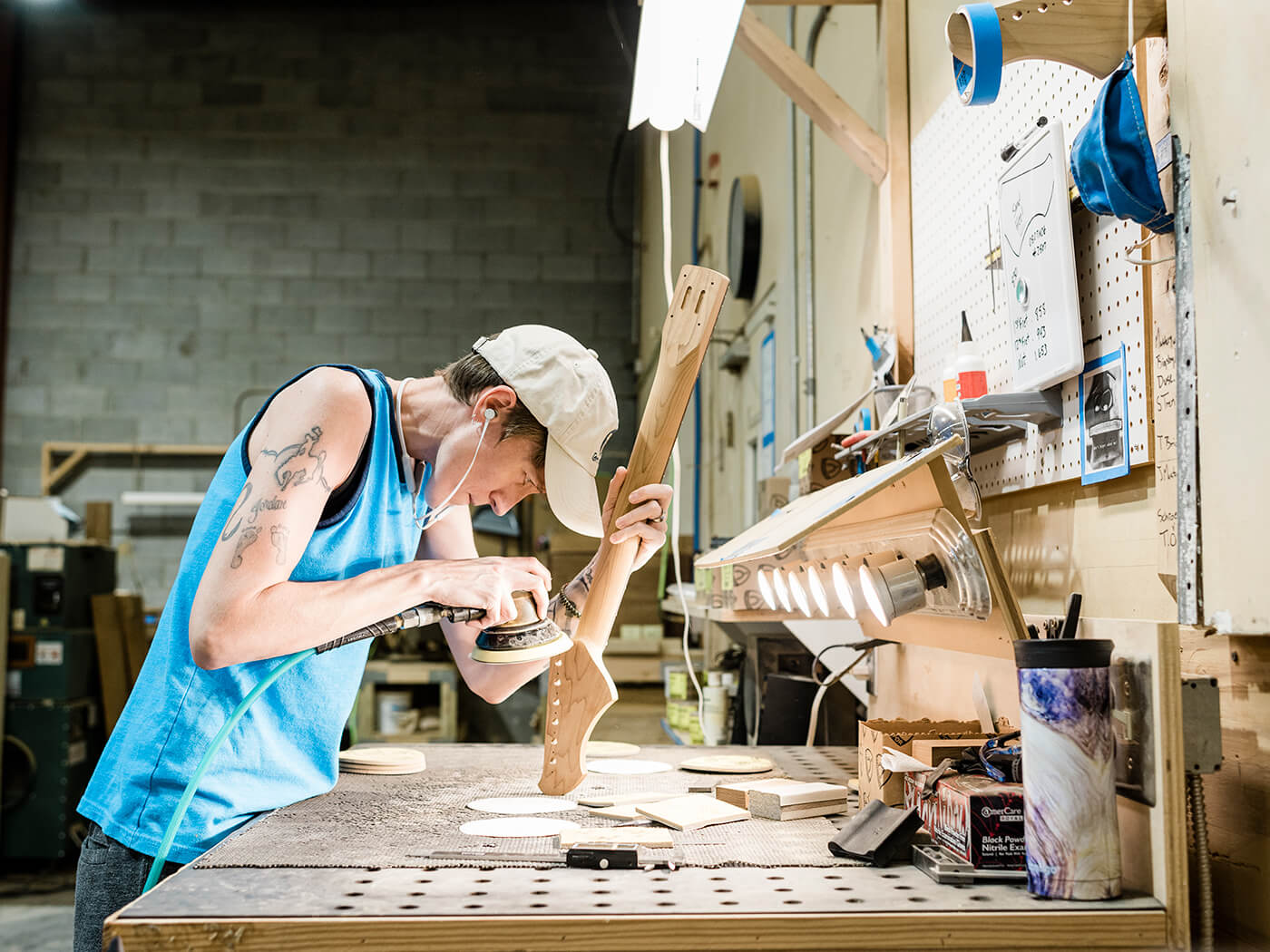
Tempered tantrum
Starting in 2009, the Fano brand further proliferated through a deal with Premier Builder’s Guild (PBG), which ramped up the production of team-built guitars in Arroyo Grande, California, while Dennis continued to make a smaller number of one-offs in Fleetwood, Pennsylvania, where he’d lived and worked for several years. Dennis Fano parted with PBG in 2014, leaving his eponymous brand name behind in the deal, and the Fano line passed to Desert Son Musical Instruments in 2016, when PBG folded.
Meanwhile, in 2014 Fano launched an entirely new guitar company, Novo Guitars. If anything, Novo instruments would become even more hotly desirable on the boutique market than the appealing creations that had carried his surname. And while many players could undoubtedly trace the lineage, they represented an entirely new style and ethos from a maker who was again proving he had an inside track on the hip and happening.
“There’s a DNA that’s recognisable,” says Fano. “But making that transition from what I was doing with Fano to Novo, I knew I had to go in a slightly different direction. Originally with Novo I came up with the Sectis, which is more of a contemporary design. I wasn’t doing distresses right out of the gate. I thought, ‘I’ve got to put some space between what I used to do and what I do now.’
“But it wasn’t very long after starting Novo that I really liked what I was doing, so I took this new model, the Novo Sectis, and did some traditional versions of that. That’s where the Serus T, Serus S, and Serus J came from.”
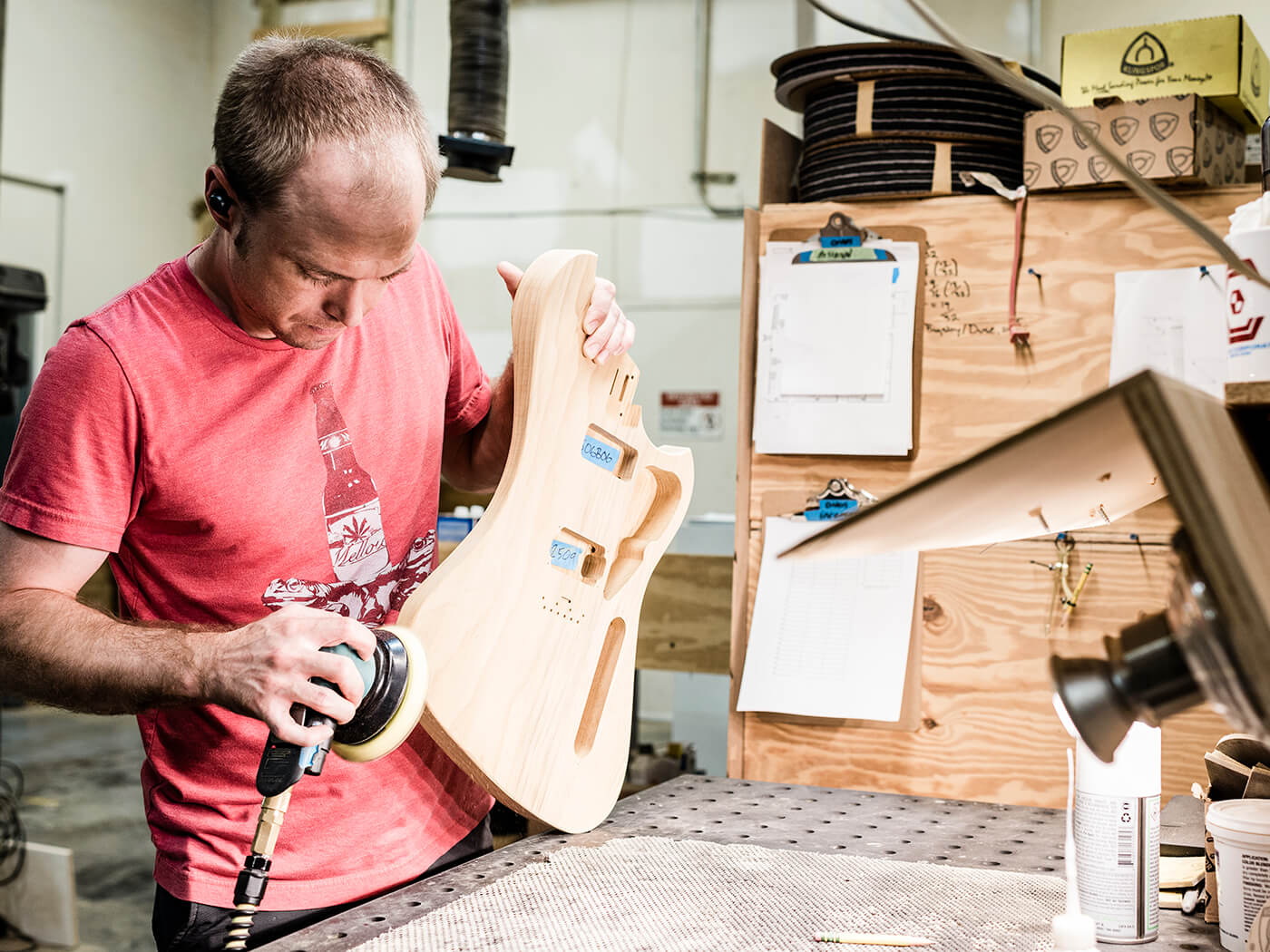
In addition to the new Novo body style – an original offset that was somewhat larger than anything but the existing JM-inspired Fano JP6, with a proportional blend of the pointy and curvaceous – the Serus line ushered in Novo’s prominent use of thermally aged woods (aka baked, roasted, or torrefied), supplied by the Tempered Tonewoods company of Sonoma, California. For many players, this has become a calling card of the brand as much as the novel look and the luscious distressing.
“I had spoken with Hans [Brede] at Tempered Tonewoods pretty early on,” Fano tells us, “And I knew there was something going on there. So, when Novo was getting off the ground maybe the first half a dozen or eight guitars were made out of non-tempered wood, but I quickly wanted to start incorporating the thing. Hans had sent me some tempered butternut and red pine and some tempered basswood, a variety of materials to work with, and I knew immediately that there was something there that I wanted to explore further. The guitars just resonated extremely well. Acoustically they were very loud. It was unlike any of the kiln-dried materials I had been using up to that point.
“It was kind of this lightning bolt moment: ‘This is what I should be doing! I should be using as much of this stuff as I can.’ And we’ve continued to use it up to this day.”
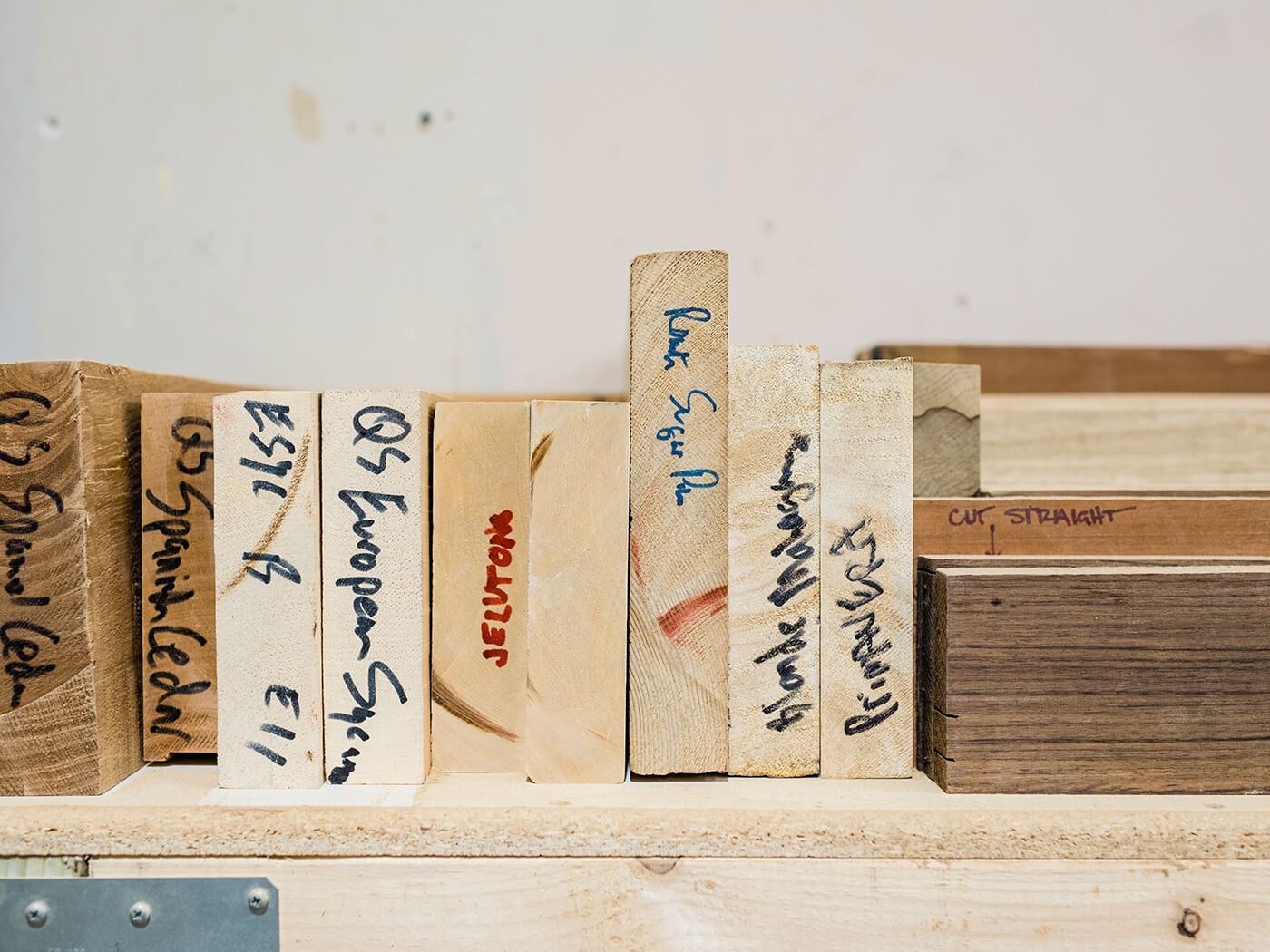
When probed for the secret behind the rampant popularity of Novo guitars these past few years, Fano reveals that, other than the carefully selected woods, “the main thing is just attention to detail. And it’s probably something that you’ve heard from other builders who are doing really good work: There’s no shortcuts, you just have to take your time. We have 21 employees now, which is huge. I would never think Novo would get to be that size, I thought it would be me and maybe a handful of other people. But with 21 people, we’re still only shipping somewhere between 45 to 50 guitars a month.
“You add up all those hours – and of course we have some office staff – but if you account for people with hands on instruments and how many we’re shipping, it’s still relatively few. We’re looking at ways to make our process more efficient without cutting corners. We want to continue to do what we’re doing but do it more efficiently, so we can think about scaling the operation and maybe look at doing 125 or 150 guitars a month, because I think the demand is there for the instruments, but it all comes back to attention to detail.”

Nashville skyline
Four years ago, Fano transported the entire Novo operation from Pennsylvania to Nashville. It seemed, at the time, an interesting move for a guitar maker that hadn’t been heavily associated with the country scene up until that time, but makes total sense once he explains it.
“I knew that this would be a really good place to sort of mine some talent. You’ve got a lot of players in town, young players who maybe want to be a part of a company like we wanted to build. And it’s really worked out well. We’ve got some fantastic people working for us, and I see us being here for a good, long time. I have a general manager in Matthew Timmons and an operations manager in Steven Fazio. Those guys… I could leave today and say, ‘They’ve got it. They can handle it.’”
A more affordable, Asian-made range of Dennis Fano designs soon followed under the Rivolta banner, then late in 2020 Novo introduced their first entirely new body shape since the inception of the company. The Solus M-1 and F-1 are single-pickup, single-cutaway models with shorter 24.75-inch scale lengths. Two-pickup renditions followed, and now Novo is ramping up for a creative explosion of sorts, which should introduce several new models over the next year and a half.
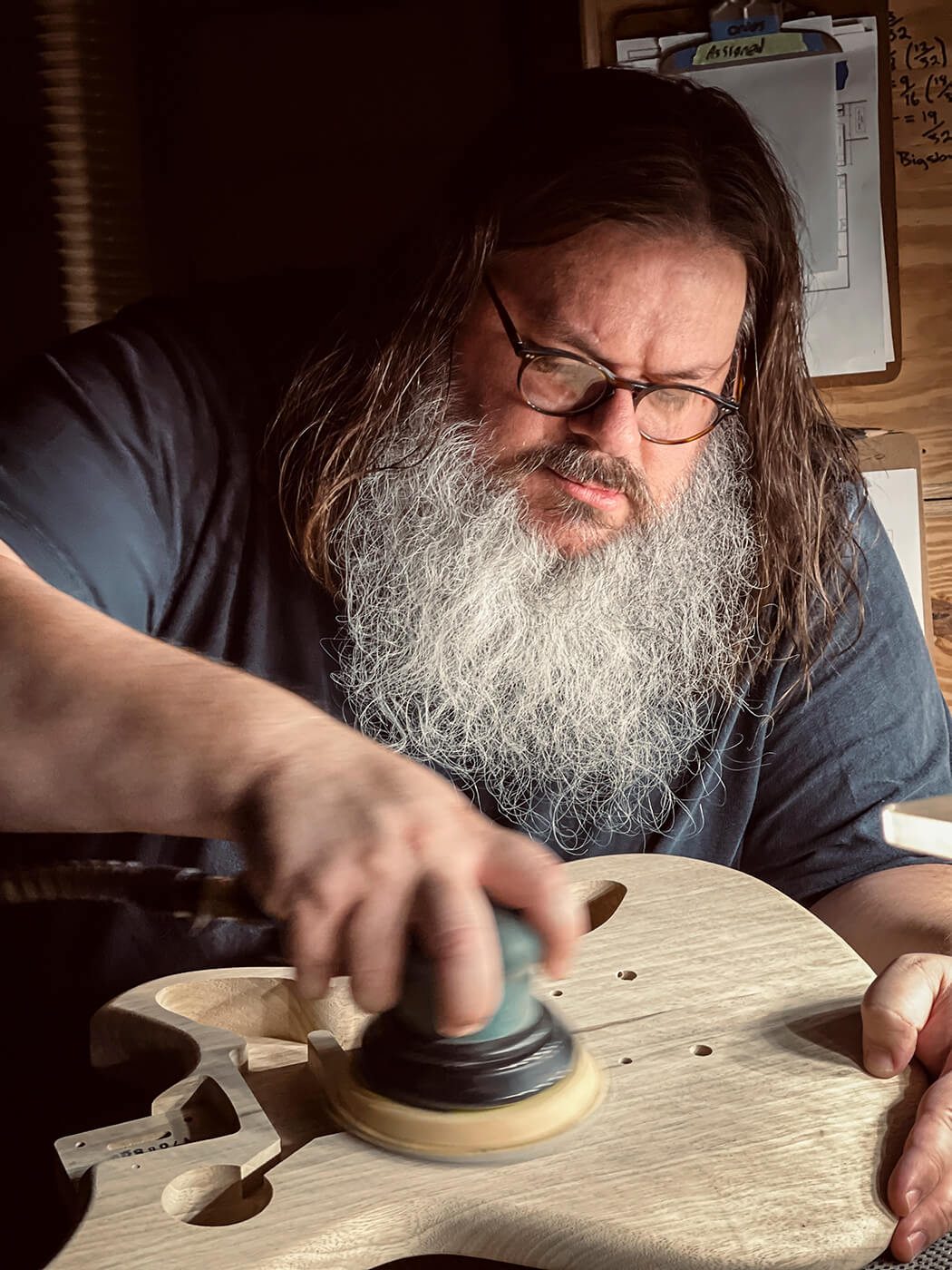
Renderings shared with us in a ‘for your eyes only’ document reveal a series of guitars with Superstrat, Rickenbacker, Gretsch, and Duo-Sonic leanings, respectively, but all with Fano’s by-now distinctive design touches and some clear common ground with existing Novos.
“Last year when we shut down for seven weeks because of the pandemic,” says Fano, “I spent the time designing new guitars. And I think I came up with 16 or 17 new designs, so I’ve got a well to go back to. We’re introducing a couple of new models the end of this year and going into the spring of next year which I’m really excited about. I feel there’s enough there to mine that we’ve got plenty to hold us over for the next few years.”
For the many diehard fans of the man’s work thus far, these words alone should set the saliva flowing, and the orders rolling in.
Visit novoguitars.com for more.




